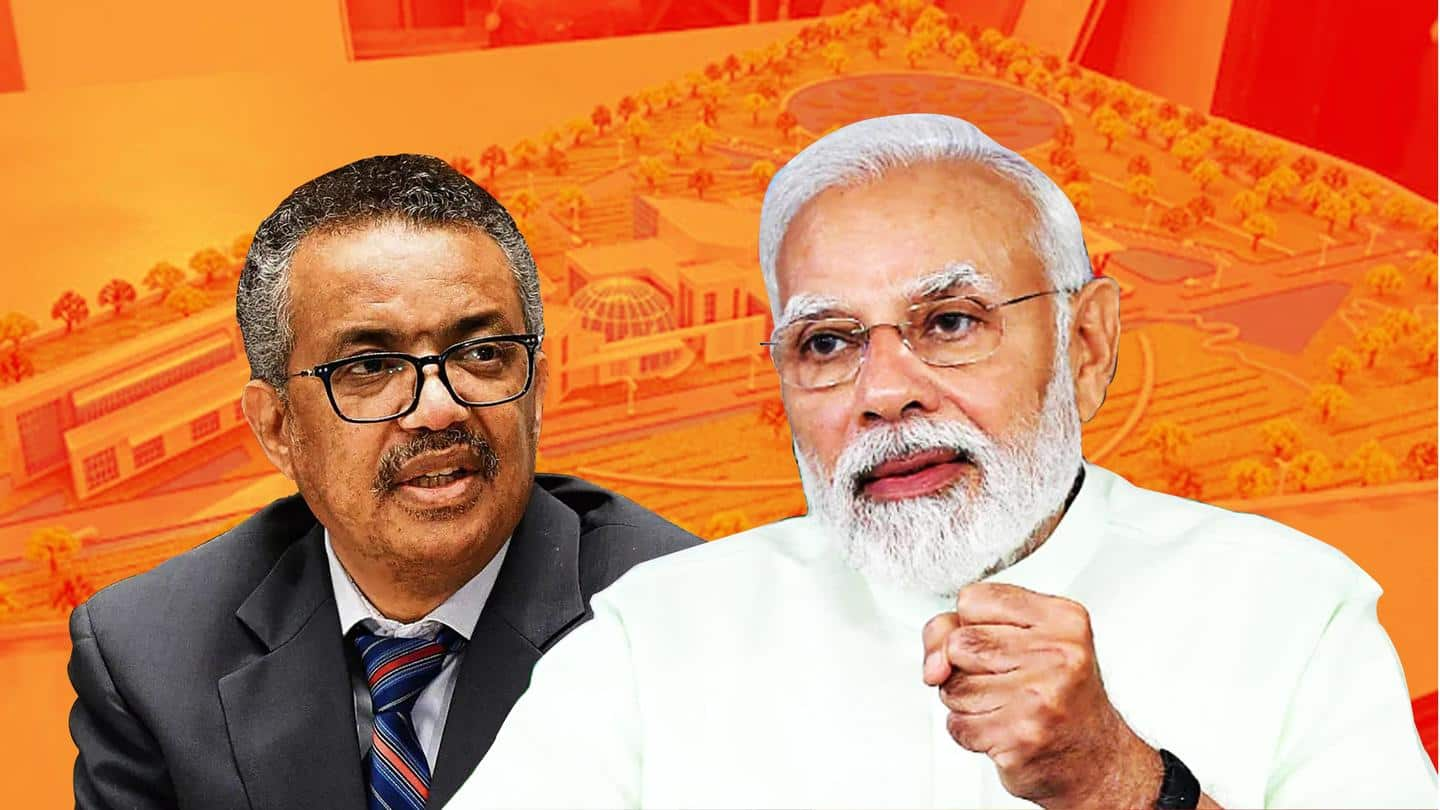
WHO's first global traditional medicine center in Gujarat by 2024
What's the story
World Health Organization's (WHO) first-of-its-kind Global Center for Traditional Medicine (GCTM) is set to open in Gujarat's Jamnagar by 2024, reported News18.
Spanning 35 acres of area, the facility will reportedly have several research centers, data laboratories, technology laboratories, cultural learning centers, and training classrooms.
Prime Minister Narendra Modi and WHO Director-General Dr. Tedros Adhanom Ghebreyesus officially unveiled the project earlier on Tuesday.
Context
Why does this story matter?
The World Health Organization and the Government of India inked an agreement last month to establish the Global Center for Traditional Medicine (GCTM) in India.
India also intends to invest $250 million in the project.
Notably, traditional medicine is used by around 80% of the world's population, according to the WHO, which said the same is used in 170 of its 194 member states.
Infrastructure
Center to have dedicated research departments
The upcoming GCTM in Gujarat will be "a multi-floor, high-tech, world-class infrastructure facility," government officials told News18.
It will have "more than 100 rooms and multiple large auditoriums and conference halls," an official said.
The facility will have dedicated research departments, which "are likely to be divided on the basis of WHO's regions that separates the traditional medicines country- or region-wise," the official added.
Design
Design of GCTM expected to be finalized soon
Another government official said the center will have data labs, IT labs, a center for learning cultures and biodiversity, an administration block, auditoriums, and numerous multipurpose facilities.
"The team of business operations of the WHO and its interim office in India will finalize the [center's] design in the coming days," the second official stated.
Information
GCTM to deal with global medicines and therapies
The center will not just deal with Ayurveda, Unani, Siddha, and Sowa-Rigpa medicines, but also other traditional medicines and therapies from across the world. These will include African, Arabic, Islamic, and Chinese medicines and healing techniques.
Details
Center's design to be based on four key functionalities
The GCTM's design will reportedly be based on four key objectives: evidence and learning, data and analytics, sustainability and equality, and innovation and technology.
Data and analytics is an area that will assist in the administration of traditional medicines and data analyses.
Meanwhile, the innovation and technology department will aid in identifying and evaluating innovations as well as updating IT applications, among other things.
Different zones
It will have 6 zones as per WHO regions
The center's floors/wings could reportedly be divided into six zones based on the regions divided by the WHO.
These would include the AFRO zone for African medicines, AMRO for American medicines, and EMRO dedicated to Eastern Mediterranean medicines.
Meanwhile, the GCTM will also have a EURO wing for European medicines, SEARO dedicated to South East Asian medicines, and WPRO for Western Pacific Region medicines.